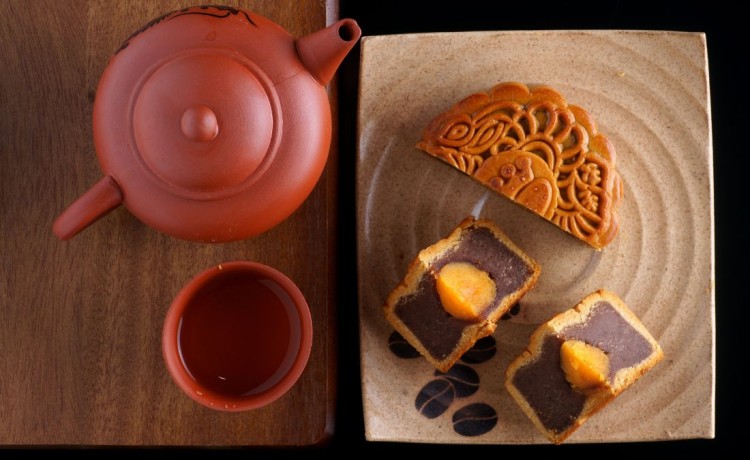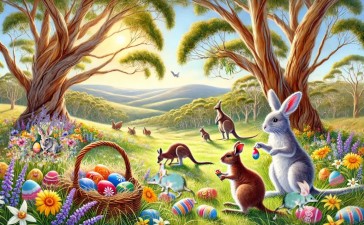As the summer heat begins to wane and the harvest moon rises full and bright in the night sky, millions of people across China and around the world prepare to celebrate one of the most cherished traditions in Chinese culture: the Mid-Autumn Festival, or Zhongqiu Jie (中秋节). This ancient celebration, steeped in history and rich in symbolism, has been observed for over 3,000 years, evolving from a simple harvest festival into a profound celebration of family, unity, and gratitude.
Origins in Myth and History
The Mid-Autumn Festival’s roots stretch back to the Shang Dynasty (1600-1046 BCE), where it began as a celebration of the autumn harvest. However, the festival’s most famous origin story is tied to the legend of Chang’e, the Moon Goddess. According to this tale, the heroic archer Hou Yi shot down nine of ten suns that were scorching the Earth. As a reward, he received an elixir of immortality. But his wife, Chang’e, drank the elixir to prevent it from falling into the wrong hands. She then floated to the moon, where she remains to this day. People began to worship the moon, hoping to be blessed with beauty and longevity like Chang’e.
Over time, the festival absorbed various cultural and religious elements. During the Tang Dynasty (618-907 CE), it gained imperial endorsement and became a time for moon worship. By the Song Dynasty (960-1279 CE), it had evolved into a major annual celebration, complete with moon cakes, a tradition that continues to this day.
The Significance of the Full Moon
The timing of the Mid-Autumn Festival is no coincidence. It falls on the 15th day of the eighth lunar month when the moon is at its fullest and brightest. In Chinese culture, the full moon symbolizes reunion and completeness. Its round shape represents the unity of family, making the festival a time for gatherings and expressions of love and gratitude.
The moon’s connection to the changing seasons also gives the festival a deeper meaning. It marks the end of the autumn harvest, a time to give thanks for the year’s bounty and to pray for good fortune in the coming year. This agricultural significance remains important, even in modern, urbanized societies, as a reminder of humanity’s connection to nature’s cycles.
Mooncakes: The Festival’s Iconic Treat
No discussion of the Mid-Autumn Festival would be complete without mentioning mooncakes. These dense, round pastries, typically filled with lotus seed paste or red bean paste and sometimes containing salted egg yolks, are as integral to the festival as turkey is to Thanksgiving. The round shape of mooncakes echoes the fullness of the moon and the completeness of family unity.
Mooncakes have a fascinating history of their own. Legend has it that during the Yuan Dynasty (1271-1368 CE), Chinese rebels used mooncakes to smuggle secret messages, coordinating an uprising against Mongol rule. While this story may be more myth than fact, it has cemented the mooncake’s place as a symbol of Chinese cultural identity and resilience.
Traditional Celebrations
Traditionally, the Mid-Autumn Festival is a time for families to reunite. People travel long distances to be with their loved ones, mirroring the idea of “reunion” symbolized by the full moon. The evening is spent enjoying a lavish family dinner, admiring the moon, and sharing mooncakes.
Lanterns also play a significant role in the festivities. Children parade with colorful lanterns in various shapes, from traditional rabbits (inspired by the myth of the Jade Rabbit on the moon) to more modern designs. In some regions, floating sky lanterns are released, carrying wishes and prayers skyward.
Another cherished tradition is the recitation of poetry while moon-gazing. This custom dates back to the Tang Dynasty when literary gatherings under the full moon became popular among scholars and officials.
Evolution and Global Spread
As with many ancient traditions, the Mid-Autumn Festival has evolved with the times. In modern China, while family gatherings remain central, the festival has also become a popular time for tourism and outdoor activities. Parks and public spaces host cultural performances, lantern displays, and moon-viewing parties.
The festival’s appeal has spread far beyond China’s borders. Across Asia, countries with significant Chinese populations or cultural influence celebrate their own versions of the Mid-Autumn Festival. In Vietnam, for instance, it’s known as Tết Trung Thu and is particularly focused on children. In Japan, the related Tsukimi festival honors the harvest moon with sweet dumplings and seasonal decorations.
In recent decades, the Mid-Autumn Festival has gained recognition in Western countries, particularly those with large Chinese diaspora communities. Cities like San Francisco, Vancouver, and Sydney now host their own Mid-Autumn Festival celebrations, complete with lantern displays, mooncake tastings, and cultural performances. These events not only serve the local Chinese communities but also introduce the rich cultural tradition to a broader audience.
Modern Interpretations and Innovations
While respecting tradition, the festival has also embraced modern innovations. Mooncake manufacturers now offer a wide variety of flavors and styles, from ice cream mooncakes to healthy, low-sugar versions. Some bakeries create elaborate, limited-edition mooncakes in luxurious packaging, turning them into coveted gifts for business associates and friends.
Technology has also found its way into the celebrations. Virtual reality moon-viewing experiences, interactive lantern displays, and social media mooncake-sharing campaigns have become popular, especially among younger generations. These innovations help keep the festival relevant in a rapidly changing world while preserving its core values.
Cultural Significance in the Modern World
In today’s fast-paced, globalized world, the Mid-Autumn Festival serves as an important cultural anchor. For many, it’s a rare opportunity to slow down, reconnect with family and friends, and reflect on the important things in life. The festival’s emphasis on gratitude and unity resonates across cultural boundaries, contributing to its growing global appeal.
For overseas Chinese communities, the Mid-Autumn Festival is a powerful link to their heritage. It provides an opportunity to pass down traditions to younger generations and to share their culture with their adopted communities. This cultural exchange fosters understanding and appreciation, bridging divides in multicultural societies.
A Timeless Celebration of Unity and Gratitude
As the Mid-Autumn Festival continues to evolve and spread around the world, its core essence remains unchanged. It is a celebration of unity, of gratitude for life’s blessings, and of hope for the future. Whether observed in a bustling Chinese city, a quiet suburb in North America, or anywhere else in the world, the sight of the full moon still has the power to evoke a sense of wonder and connection.
In a world often divided by differences, the Mid-Autumn Festival stands as a reminder of our shared humanity. It speaks to universal values of family, gratitude, and harmony with nature. As families gather under the same moon, sharing mooncakes and stories, they participate in a tradition that has endured for millennia, bridging past and present, East and West.
The Mid-Autumn Festival, with its mooncakes and moonlight, lanterns and legends, continues to illuminate the hearts of millions around the world. It reminds us to pause, look up at the night sky, and appreciate the beauty and bounty of life, surrounded by those we love. In doing so, we connect not only with each other but with countless generations who have gazed at the same moon, sharing the same hopes and dreams for a bright and harmonious future.
- Find out more
- Launch Pad + Accelerator Expressions of Interest
- Selling and Licensing Your Art & Designs Around the World with ArtSHINE.
- Looking for exciting new Art and Designs to license.
We’re here to help you to take action, just like we’ve helped thousands of other entrepreneurs, business owners, and creative professionals all around the globe.
Now is the time to let your passion SHINE.
Now is the time to Make Tomorrow Today!
To your success, Vinh Van Lam and Stuart Horrex Cofounders ArtSHINE.com





